Where is The Solomon Islands?
About The Solomon Islands
The Land
The People
Life and Death
Health, Energy and the Environment
Education and Work
Travel, Communication and the Media






Back to the Flags of Oceania page

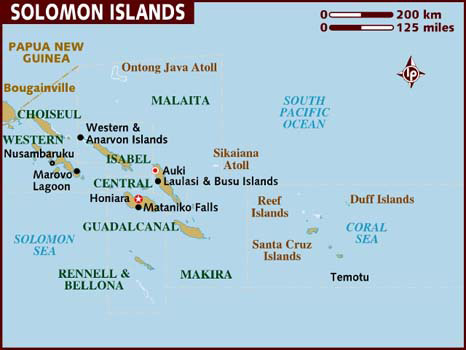


The Solomon Islands is a group of 6 main islands and over 900 smaller ones which form one small country in Oceania. Together with 3 other countries, the Solomon Islands form a group of islands known as Melanesia.
The Solomon Islands are in the Pacific Ocean.
The land is mostly mountains of volcanic origin.
The geographical coordinates for the centre of Solomon Islands, also known as lines of latitude and longtitude, are:-
Latitude - 8 00S
Longitude - 159 00E
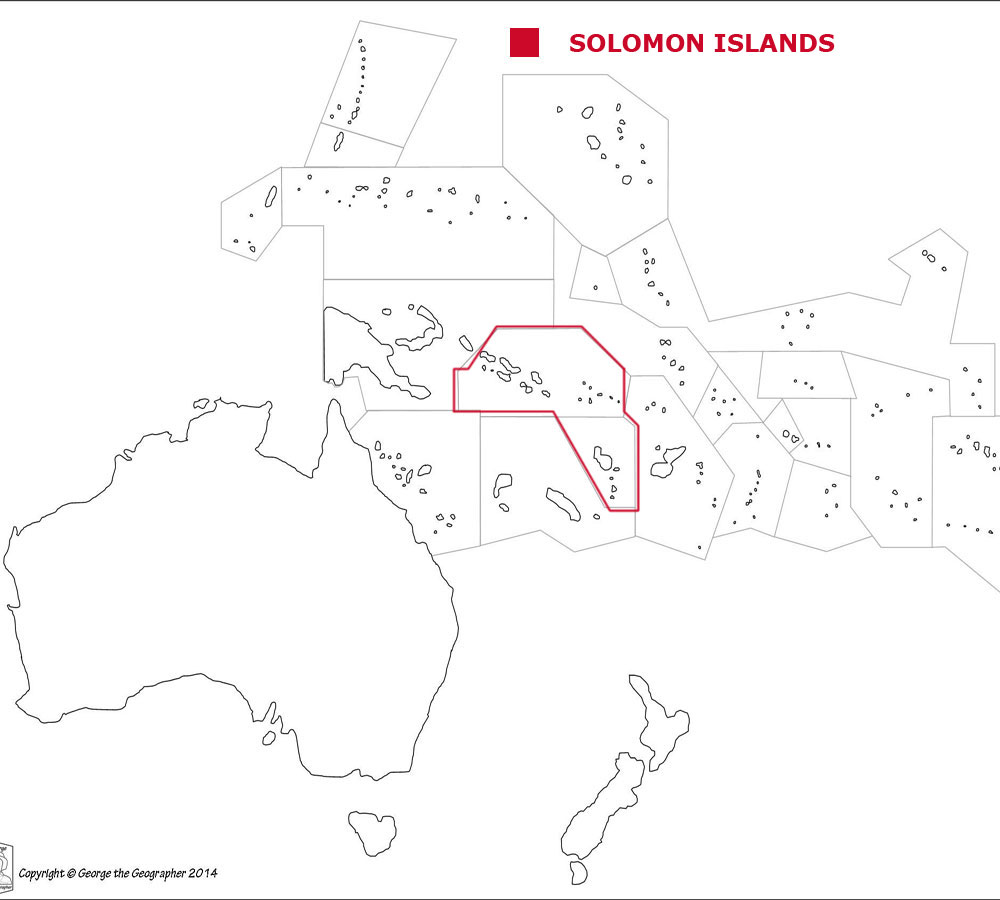

Check the weather in Honiara now.
This is the time in Honiara now
 The Solomon Islands flag is divided
diagonally by a thin yellow stripe, running from the lower flag pole side to the upper right corner. The upper triangle formed is blue with five white pointed stars arranged
in an X pattern. These starts represent the five main island groups. The lower triangle is green. Blue is for the ocean, green for the land and yellow for the sun.
The Solomon Islands flag is divided
diagonally by a thin yellow stripe, running from the lower flag pole side to the upper right corner. The upper triangle formed is blue with five white pointed stars arranged
in an X pattern. These starts represent the five main island groups. The lower triangle is green. Blue is for the ocean, green for the land and yellow for the sun.
The Solomon Islands is a parliamentary democracy with a Prime Minister as head of government. The British monarch is Head of State represented by a governor general.
In elections everyone over the age of 21 can vote.
The currency in Solomon Islands is the Solomon Islands dollar. The Solomon Islands is a member of the Commonwealth.
English is the official language but only spoken by a small percentage of people.
Hear the National Anthem
These are the anthem words
We have already written our own history of England but are asking schools in The Solomon Islands to provide us with a detailed history of
their own country. Check how here.
![]()
![]() Back to the top
Back to the top

The total land area of the Solomon Islands is 27,986 sq kms which is the 4th largest in Oceania.
The Solomon Islands has lakes, rivers and canals which total 910 sq kms.
The Solomon Islands has no boundaries with other countries.
The Solomon Islands has a coastline of 5,313 kms which is the 4th longest in Oceania.
The highest point in the Solomon Islands is Mount Popomanaseu at 2,335 metres.
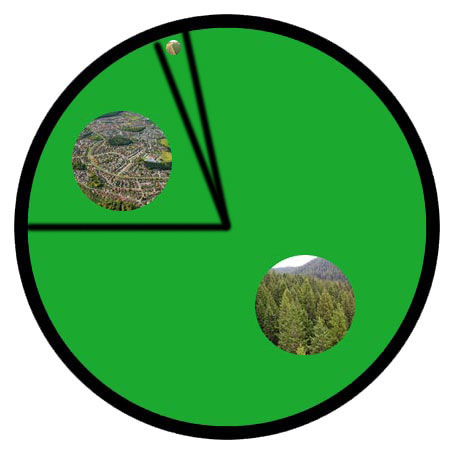

The total population of the Solomon Islands is 647,581 people, making it the 5th largest country in Oceania by population.
Of this number 316,893 are females and 330,688 are males.
A person from the Solomon Islands is called a Solomon Islander.
To be a citizen of the Solomon Islands, one of your parents must be a citizen of the Solomon Islands. It is not sufficient to be born in the Solomon Islands. You have to live in the Solomon Islands for
7 years before you can begin to apply for citizenship.
The largest five cities in the Solomon Islands, by population are:-
- Honiara on Guadalcanal 56,298 people
- Auki on Malaita 6,811
- Giza on Western Province 6,154
- Buala on Isabel 2,700
- Tulagi on Central Province 1,750
 Each little Owlbut is 1 person and
the big yellow rectangle is 1 sq km. After a while you can compare countries and see which ones are the most crowded. Remember it is only an average as
more people live closer together in towns and cities than in villages out in the country.
Each little Owlbut is 1 person and
the big yellow rectangle is 1 sq km. After a while you can compare countries and see which ones are the most crowded. Remember it is only an average as
more people live closer together in towns and cities than in villages out in the country.
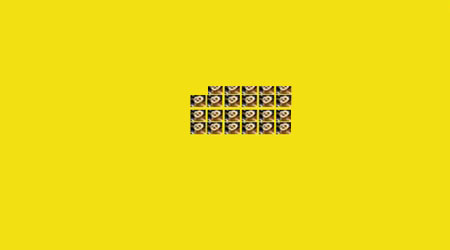
22.3% of the people live in cities or towns.

The birth rate in The Solomon Islands is 25.3 births per 1,000 of population
The death rate in The Solomon Islands is 3.8 deaths per 1,000 people.
Check this against the birth rate. If the death rate is higher than the birth rate then
the population will decrease unless immigrants arrive in the country.
There are 12.9 deaths of girls under 1 year per 1,000 of births and 17.3 deaths of boys.
The median age for females is 22.4 and for males is 22.0. The median age is that age which divides the population exactly in half so there are the same number
of people above the median age as below it.
The average age of a woman when she has her first child is 21.6.
The elderly dependency ratio is 6.0. This is the number of elderly people (ages 65+) per 100 people of working age (ages 15-64).
The potential support ratio is 16.6. This is the number of working-age people (ages 15-64) per one elderly person (ages 65+). As a population ages, the potential support ratio tends to fall, meaning there are fewer potential workers to support the elderly.
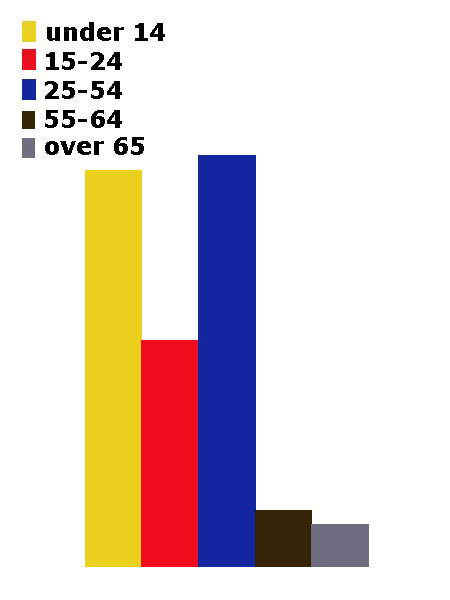
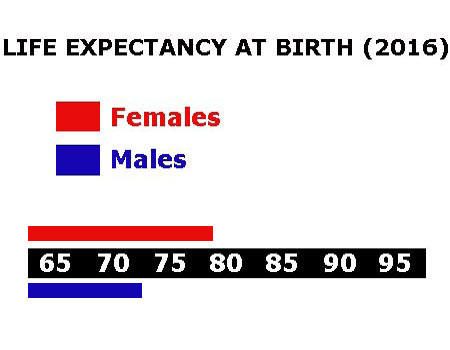

The Solomon Islands spends 5.1% of its total income on health care.
There are 0.22 doctors per 1,000 people.
There are 1.3 hospital beds per 1,000 people.
22.5% of the population are estimated as obese.
93.2% of the urban population and 77.2% of the rural population have drinking water that is either piped into their home or they have access to a public tap, a protected borehole, well, spring or
protected rainwater collection facility.
81.4% of the urban population and 15.0% of the rural population have access to a flushing toilet that is connected to a sewer. a pit latrine (that is a
permanent hole in the ground that is looked after) or a composting toilet.
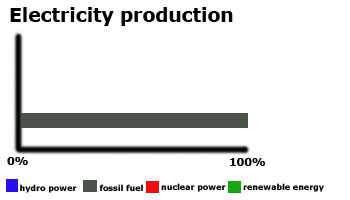
The Solomon Islands releases 0.3 million metric tons of carbon dioxide by burning fossil fuels in the process of producing and consuming energy. This puts it as the 7th highest in Oceania.

The Solomon Islands spends 10.0% of its total income on education.
Children usually start school at age 6 in The Solomon Islands. Primary education is for six years until age 12 and secondary education can continue
till 19. However none of this is compulsory. This may be followed by further education at a university or college.
Generally the school year consists of 4 terms and starts in the first week of February and finishes in the middle of December. There is usually a 1 week
break in the middle of April, a 3 week break at the beginning of July and a 1 week break at the end of September.
79/2% of females and 88.9% of males are able to read and write by the age of 15.
We have no figures for the number of people aged between 16 and 24 who are not in work.
The total number of people available for work in the Solomon Islands is 202,500.
 They work in the following sectors.
They work in the following sectors.
- Agriculture includes farming, fishing and forestry work
- Industry includes mining, manufacturing, construction and energy workers
- Services is everything else

There is 1 paved airport in the Solomon Islands, which is the equal 10th highest number in Oceania.
![]()
There are no railways in the Solomon Islands.
![]()
There are 1,390 kilometres of roads in the Solomon Islands, which means the Solomon Islands is in 6th place for the most kilometres of roads in Oceania.
![]()
There is 1 major national newspaper in The Solomon Islands.
There are 416,572 mobile phone users.
1% of the people have a fixed landline.

69,859 people have access to the internet at home via any device (computer or mobile).


